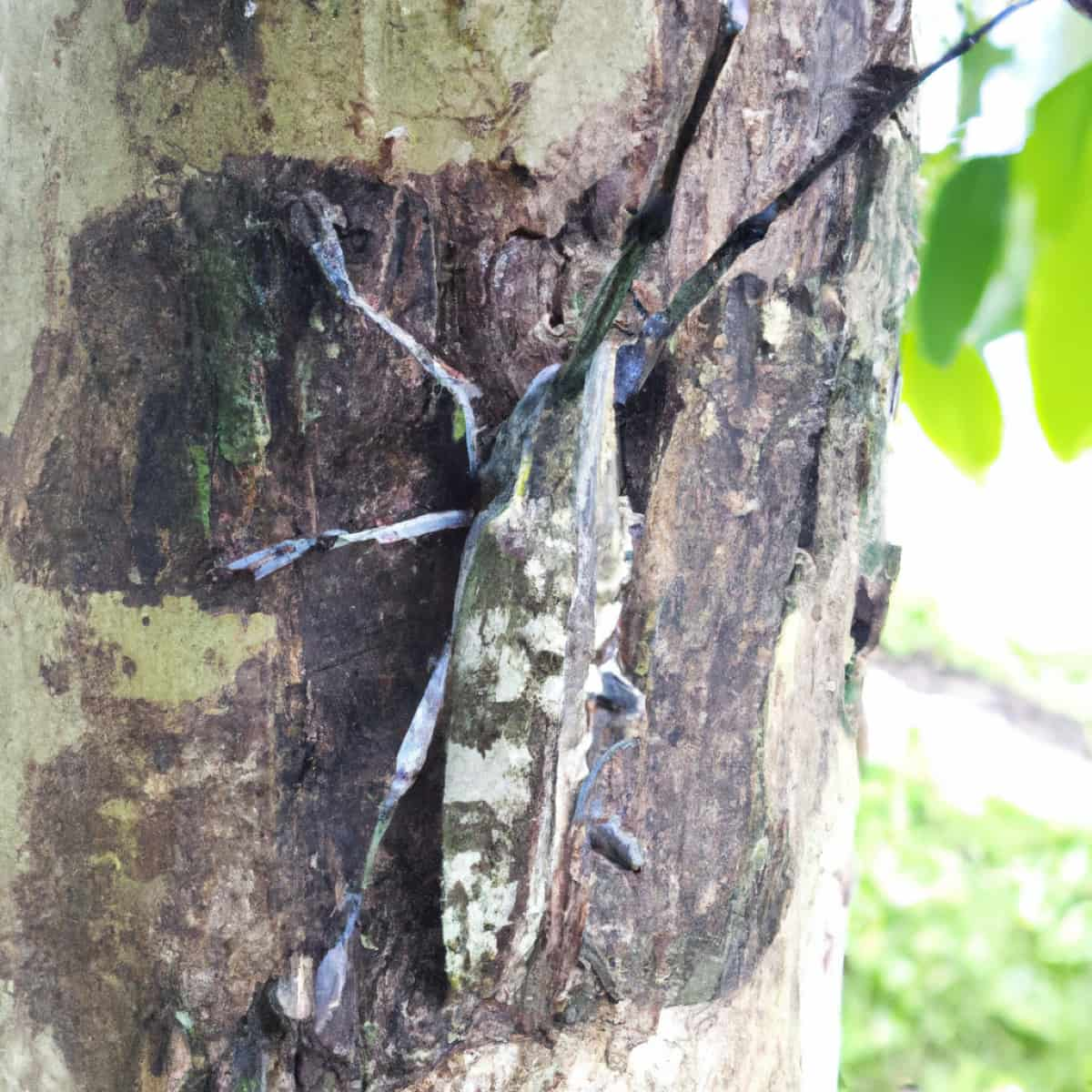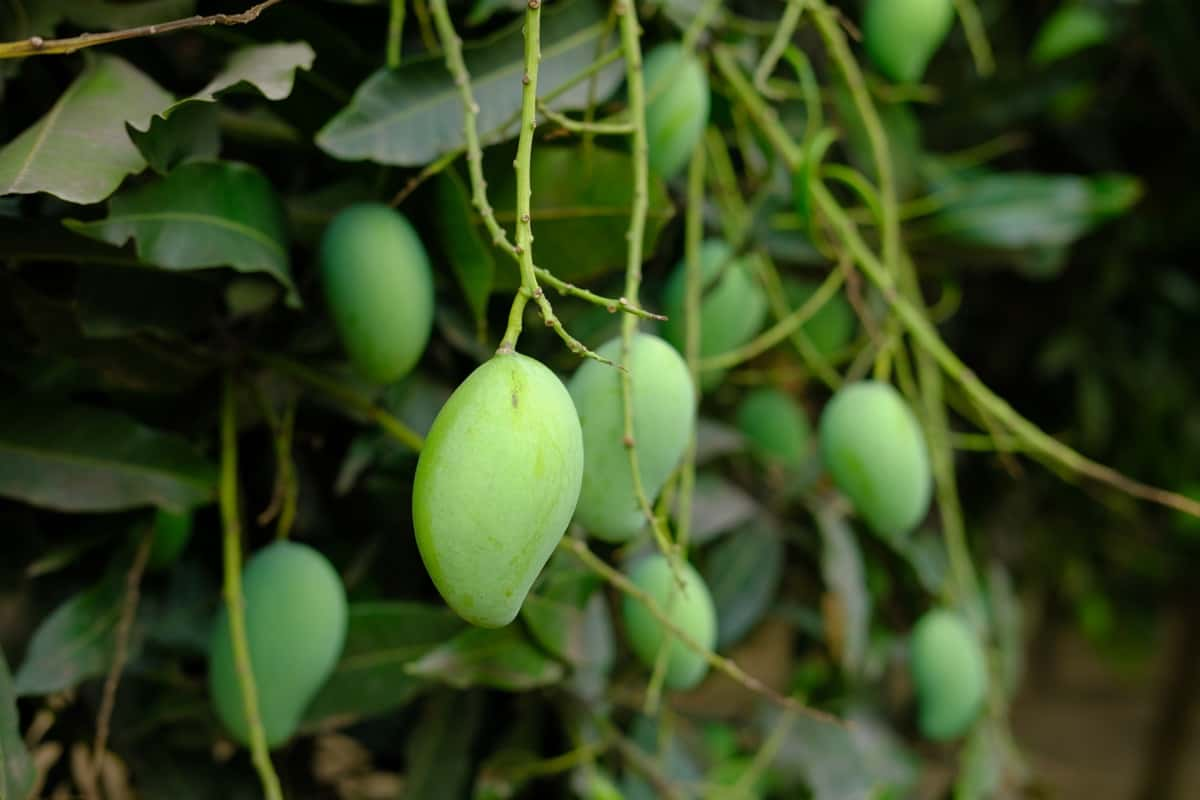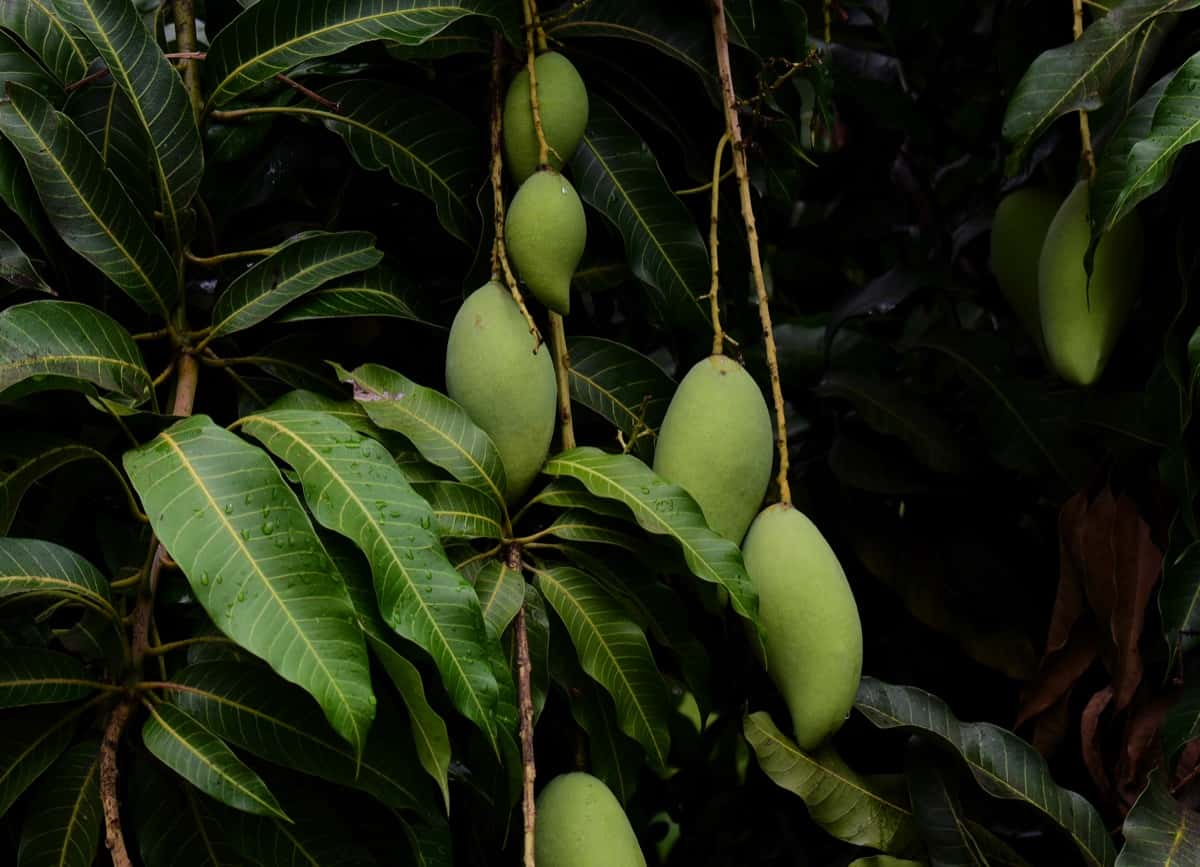The Mango Stem Borers, Batocera rufomaculata, belonging to the Family Cerambycidae of the Order Coleoptera, is native to India, Southeast Asia, and parts of the Middle East. It is a wood-boring beetle that bores into the stem and branches, weakening the tree and eventually causing it to die.

The larvae also feed on the mango tree’s leaves, flowers, and fruits, causing premature fruit drop and reducing yields. To effectively manage this pest, it is important to understand its life cycle, its preferred habitats, and the best methods for controlling it. This article will provide an overview and discussion of the Mango Stem Borer Pest in Mango crops, including its symptoms, identification techniques, and control.
Mango Stem Borer Pest Management
Life Cycle of Mango Stem Borer Pest in Mango Crop
The life cycle of the mango stem borer pest has four stages. They are egg, larva, pupa, and adult. The life cycle of the mango stem borer pest in mango crops typically begins when adults lay their eggs at the base of the mango stalk. The eggs hatch into larvae. They feed on the tree’s inner bark and burrow deeper inside the stalk as they mature.
After approximately six weeks, the larvae will pupate, forming a protective cocoon within the stalk. The adult stems borer emerges from the cocoon and feeds on the mango leaves and flowers. The adults will feed on these parts of the tree for up to two weeks before they mate, and the female lays eggs at the base of the mango stalk. The cycle then starts all over again.
Occurrence of Mango Stem Borer Pest in Mango Crop
Location of Mango Stem Borer pest: This pest infests mango crops in India, Africa, Colombia, Mexico, Bangladesh, China, Indonesia, Malaysia, Nepal, Sri Lanka, Italy, the Philippines, and the United States. In India, the pest infests the crops in the states, especially Andhra Pradesh, Delhi, Karnataka, Kerala, Maharashtra, Madhya Pradesh, Punjab, and Tamil Nadu.
Host range: The pest primarily infests mango crops, but it can also feed on other crops such as Apple, Fig, Jackfruit, Papaya, Eucalyptus, Mulberry, Rubber, Silk Cotton, and Moringa.
Factors Favoring the Population Increase of Mango Stem Borer Pest in Mango Crop
- Availability of host plants – The mango stem borer is an obligate feeder on mango trees and other members of the Anacardiaceae family.
- Climate – The mango stem borer thrives in tropical climates with high temperatures and humidity. These conditions are ideal for the growth and development of the pest, allowing it to reproduce quickly and in large numbers.
- Lack of natural predators – The mango stem borer is not highly susceptible to natural predators, including birds and insects.
- Cultivation practices – Poor cultivation practices, such as overcrowding of mango trees, can also provide ideal conditions for the mango stem borer to thrive.
In case you missed it: Mango Hoppers Pest Management: Symptoms, Treatment, Chemical, Biological, Natural, and Organi Control

Identification of Mango Stem Borer Pest in Mango Crop
- Eggs: They are small, laid in solitary, white in color, and spherical in shape.
- Larva: The larvae (grubs) are about 8-12mm long and legless grubs and white, with a reddish-brown head and thorax.
- Adults: The adult beetle is about 30-40mm in length and has a long snout, with a reddish-brown head and body, two pink dots and lateral spine on the thorax, and yellowish-white antennae and legs.
Damage Symptoms of Mango Stem Borer Pest in Mango Crop
- The symptoms of this pest include wilting, yellowing, dieback of leaves, shot-holing of leaves, premature fruit drop, and the presence of small moths.
- The grubs bore into the sapwood in the stems and bark and feed on the vascular tissues of the tree. The sap sometimes oozes out of the holes.
- The grubs of the mango stem borer can also infest the fruit and cause small pinholes to appear on the surface.
- As the grubs mature, they bore into the stem and create tunnels, which can cause a girdling effect and complete blockage of water and nutrient transportation.
Percentage of Yield Loss in Mango due to Mango Stem Borer Pest
- In India, the percentage of yield loss due to mango stem borer pests ranges from 30-50%, depending on the region. In Bangladesh, the average yield loss ranges between 40-50%.
- In South-Asian countries, such as Sri Lanka, Nepal, and Bhutan, the yield loss ranges from 15-30%. In other Southeast-Asian countries, such as Malaysia and Vietnam, the yield loss ranges from 5-10%.
- In Africa, yield loss is between 10-20%. In Thailand, the yield loss is around 10%. In Indonesia and the Philippines, the yield loss is around 5%.
- The Economic Threshold Level (ETL) for the mango stem borer pest is set at two or more larvae per plant.
Cultural Control of Mango Stem Borer Pest in Mango Crop
- Pheromone Traps can attract adult moths and reduce the population.
- Use a long wire or needle to draw out the grubs from the boreholes on the bark.
- Provide adequate irrigation and fertilization, remove weeds, and control the surrounding habitat to reduce the pest intensity.
- Pruning mango trees can reduce the severity of an infestation by removing the infected wood and leaves that the larvae feed on.
- Select Proper Resistant Mango Varieties.
- Remove alternative hosts like Eucalyptus, Mulberry, Jackfruit, etc.
Biological Control of Mango Stem Borer Pest in Mango Crop
- Natural predators, such as birds and bats, can help reduce the pest population by preying on the larvae.
- Parasitoid wasp, Bracon mellitor, seeks out the larvae of the stem borer and lays its eggs inside the larvae.
- Other parasitoids that control mango stem borers include Aphidius colemani, Aenasius bambawalei, and Tetrastichus howardi. These parasitoids attack the larvae of the stem borer, feeding on it and killing it.
- Predatory insects such as lady beetles and lacewings feed on the larvae and pupae of the stem borer, reducing its population.
- Entomopathogenic nematodes are microscopic worms that parasitize the stem borer larvae, feeding on it and killing it.
Chemical Control of Mango Stem Borer Pest in Mango Crop
- The commonly used insecticides are Monocrotophos, Carbofuran, and Carbaryl.
- Use Celphos tablets; provide one celphos tablet (3 grams Aluminium Phosphide) per hole. It is a fumigant that drives out the grubs from the holes.
- Mix clay and copper oxychloride, make a paste, and fill the holes with this paste to kill the grubs.
- Apply Kerosene and Coal Tar on the bark to prevent egg-laying by the adults.
Preventive Measures for Control of Mango Stem Borer Pest in Mango Crop
- Avoid any damage to the base of the trunk while performing pruning operations.
- Dead and decaying wood should be removed from the crop fields as it acts as a breeding ground for the pest.
- Intercropping can be adopted to reduce the risk of stem borer pest incidence.
In case you missed it: Maize Head Smut Disease Management: Symptoms, Treatment, Chemical, Biological, Natural, and Organic Control

Conclusion
In conclusion, the mango stem borer pest is a significant problem for farmers. Effective management strategies, such as crop rotation, chemical control, and resistant varieties, should be implemented to reduce the presence of pests. Furthermore, farmers should be aware of the signs and symptoms of mango stem borer infestation and take appropriate measures to limit its impact.
- Beneficial Insects in Pest Management
- Natural Solutions for Pest Control in Flower Gardens
- Types of Fungicides Used in Agriculture
- Common Issues in the Fruit Development Stage of Pomegranate Farming
- Fruit Development Issues in Papaya: Easy Solutions and Treatment
- Soil-Borne Diseases and How to Protect Your Plants
- Practices to Prevent Disease Spread in the Garden
- From Wilted to Thriving: How to Treat Root Rot Naturally in Houseplants
- Natural Remedies to Cure Brown Spots on Fig Tree Leaves